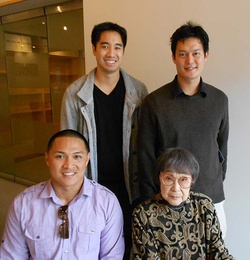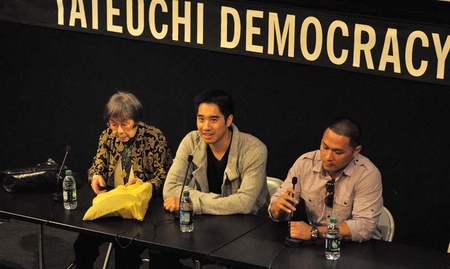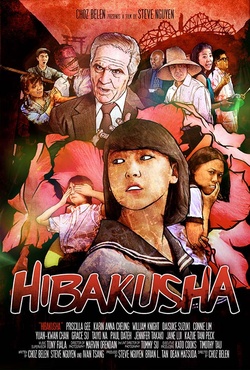Was the atomic bomb a necessity?
Was it really necessary for America to drop the atomic bomb in Japan on Hiroshima and Nagasaki? The answer to that question varies greatly depending on whether you’re Japanese or American, as well as how much you know about the people who experienced the bombings.
Growing up in post-war Japan, August 6th was always associated with the “Day Of Peace” for me. Even though it was during our summer vacation, we would return to school for that one day. There, we learned about the many lives that were sacrificed in Hiroshima and Nagasaki decades ago, and every year we swore in our hearts, “Never to repeat this tragedy again.” So after moving to America as an adult, I was shocked to learn that a surprising number of people were of the opinion that “The war would not have ended without dropping the atomic bomb. If the war had continued, ground-based combat would have spread from Okinawa to mainland Japan and even more lives would have been lost. In other words, the atomic bomb was a necessary measure.”
On the other hand, there are some people who have continued to appeal for peace to Americans who are unaware of the hibakusha experience. “No more Hiroshima. No more Nagasaki. No more Hibakusha. No more any war” is the slogan by which Los Angeles resident Kaz Suyeishi, a survivor of the Hiroshima bombing, has been advocating as a message of peace.
Even now, at 85 years old, Suyeishi continues to speak about her experience of the atom bomb at schools and other speaking engagements. Now, her real-life experiences have been re-created in the form of a 40-minute animated film, titled: HIBAKUSHA—produced and directed by 26-year old Steve Nguyen and 29-year old Choz Belen. What drove these two young, non-Nikkei Americans to choose “hibakusha” as a topic to explore for their film?
Directed by non-Nikkei 20-somethings
Nguyen, the producer of the film, said, “I first heard about Kaz from our college friend, Dean Matsuda. At the time I didn’t know anything about the atom bomb and had never even heard of the term “hibakusha.” But the stories I heard from her were extraordinary. It was shocking to hear about such an unbelievable experience—something unfathomable for people of our generation. That’s why I strongly felt that this story needed to be turned into a film and shown to as many people as possible. I immediately contacted Choz Belen to take on the animation for this project, and we set forth on production right away. That was in 2010, so after a lengthy research period on this topic, we completed the film in about 2 years.
Belen added, “When Steve first brought this to me, I honestly thought that it would be a very challenging project. The theme is really interesting, but it was something that had happened during a time that I’ve never experienced, and it took place in a land I’ve never been to…but I decided to take on the challenge.”
The film begins high above the skies of Hiroshima on August 6, 1945. Kaz, a schoolgirl at the time, is looking up at the clear blue sky with her friend, Asa. Kaz recalls, “With the blue sky in the background, the American plane was glittering brightly. It looked like an angel spreading its wings. It was beautiful.” Moments later, the angel changes its appearance into a devil.
40 years later, Kaz is in New York. She is approached to partake in an NBC television special about the atomic bomb, and is asked to speak about her experiences. At the studio, she is unexpectedly setup for a face to face with Paul Tibbets, the pilot who dropped the atomic bomb on Hiroshima.
Tibbets insists that the atomic bomb was absolutely necessary in order to put an end to the war, and furthermore, when asked by the moderator, “If you were ordered to drop the bomb again, would you do it?” he answers, “Yes.” The statements are so shocking to Kaz that she nearly faints.
The film adopts a style that goes back and forth from 1945 Hiroshima and 1985 New York, chronicling the suffering and difficulties of the “hibakusha.”

Post-screening. Front row: Kaz Suyeishi (right) and Choz Belen (left). Back row: Dean Matsuda (right) and Steve Nguyen (left).
Hoping to inspire others;
Connecting people through film
On October 20, 2012, over 150 people visited the Japanese American National Museum to attend the screening of HIBAKUSHA, and after the film the two young filmmakers and Kaz Suyeishi were greeted with applause. Later on, a long line of people waited to shake hands with Suyeishi, and others circled around to give praise to the great work done by the directors.
When asked about his aspirations, Nguyen answered, “I hope to convey the message of peace in this film to as many people as possible. I want people to connect through this piece.” A tour of several universities across America is planned, and when possible, Suyeishi will join as a guest speaker. A DVD version of the film is in the works as well.
Finally, I asked Nguyen and Belen about their goals and ambitions as filmmakers. “I want to discover stories that inspire people, and turn them into films using methods that haven’t been used before—in my own distinct style. My goal is for my work to have a positive effect on others,” said Nguyen. Similarly, Belen answered without hesitation, “My goal is to take on topics that have an affect on people and to create high-quality works from a storyteller’s perspective.” HIBAKUSHA definitely is a piece that affects its viewers. It teaches us about the hibakusha experience, and affects us positively with awareness for peace.

A Q&A with Kaz Suyeishi, Steve Nguyen, and Choz Belen (from Left to right) after the screening. (Photo taken by Tsuneo Takasugi)
© 2012 Keiko Fukuda






